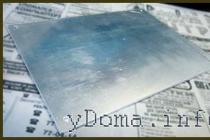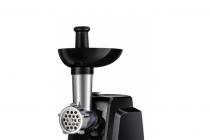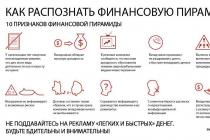Search by classifier OKPD 2
Classifier OKPD 2 OK 034-2014 CPE 2008
- Section A AGRICULTURAL, FORESTRY AND FISHERY PRODUCTS
- Section B MINING PRODUCTS
- Section C MANUFACTURING PRODUCTS
- Section D POWER, GAS, STEAM AND AIR CONDITIONING
- Section E WATER SUPPLY; WATER DISPOSAL, WASTE DISPOSAL AND RECOVERY SERVICES
- Section F STRUCTURES AND CONSTRUCTION WORKS
- Section G WHOLESALE AND RETAIL SERVICES; REPAIR SERVICES FOR VEHICLES AND MOTORCYCLES
- Section H TRANSPORT AND STORAGE SERVICES
- Section I HOTEL AND CATERING SERVICES
- Section J INFORMATION AND COMMUNICATION SERVICES
- Section K FINANCIAL AND INSURANCE SERVICES
- Section L REAL ESTATE SERVICES
- SECTION M SERVICES RELATED TO SCIENTIFIC, ENGINEERING AND PROFESSIONAL ACTIVITIES
- Section N ADMINISTRATIVE AND SUPPORT SERVICES
- Section O PUBLIC ADMINISTRATION AND MILITARY SECURITY SERVICES; MANDATORY SOCIAL SECURITY SERVICES
- Section P EDUCATIONAL SERVICES
- Section Q HEALTH AND SOCIAL SERVICES
- Section R ARTS, ENTERTAINMENT, RECREATION AND SPORTS SERVICES
- Section S PUBLIC SERVICES; OTHER SERVICES FOR THE POPULATION
- Section T VARIOUS GOODS AND SERVICES PRODUCED BY HOUSEHOLDS FOR OWN CONSUMPTION, INCLUDING EMPLOYER SERVICES FOR HOUSEHOLD STAFF
- Section U SERVICES PROVIDED BY EXTERRITORIAL ORGANIZATIONS AND BODIES
Under the all-Russian classifier of products, it is customary to understand the national standard, which is directly related to the unified coding system. The purpose of it practical use– organizing the processing of information about products in all areas National economy. It's about directly about standardization, statistics, economics, accounting. What is OKPD2, how this norm is regulated, and how to use it rationally - will be studied in the article.
What is the OKPD2 classifier and why is it needed?
The OKPD2 system is a classifier of products and services. The systematization of such a plan is necessary for the simple reason that in the process of placing an order for the provision public services specificity is required on the goods/works that must be received from the supplier. It is OKPD2 that copes well with this task. Its use contributes to obtaining an extensive selection of purchases due to the unequal indication of the subject of delivery by customers.
This classifier should not be in conflict with the CPA 2008 data (classification by type of economic activity). To ensure that these parameters match, the document separates individual parts of the code using special periods. The largest sections have a letter designation. An important role is played by the division into categories and detailing. In its absence, some characters are assigned a zero value. Separation is used in situations where a category includes several narrow subcategories.
How is its use regulated?
Since February 2014, within the framework of the Order of Rosstandart of January 31, 2014 No. 14-st, the CPA 2008 classifier has been put into permanent operation. It is European and contributes to the replacement of some outdated Russian norms. The document was developed by the Ministry of Economic Development of the Russian Federation.
The norm is based on the principle of harmonization with the statistical classification of product units by line of business in the EEC. Within the framework of the document OK 034-2014, a significant increase in the detail parameter is expected. After all, the number of sections in it is 21, while in the OK 034-2007 standard their number is 17. Special denoting letters in the sections do not take any part.
Guide updates from 2020
The directory is regularly subject to change in accordance with the norms of the current legislative acts. Therefore, within the framework of a classic virtual instrument, it will not be difficult now:

In 2020, the procedure for using the guide has become even more convenient and comfortable.
The structure of the directory and the rules of orientation in sections
Since 2018, this handbook has been used everywhere, as it has become a worthy replacement for the OPK and OKPD. As part of the new document, there was a decoding and addition of the previous provisions. Although both versions were used simultaneously from 2014 to 2017, from January 1, 2017, only the new OKPD2 standard is applied.
The document contributes to the organization of a direct search for a particular position on the basis of its belonging to the system classification elements. At the same time, a detailed systematization of products from the general to the particular takes place.
Due to well-thought-out navigation, difficulties in terms of orientation in the instrument are excluded. By code designation, you can easily determine the numerical parameters of all product groups. In fact, the system is a "matryoshka" in which one code is nested in another, refining the generalization for each subspecies.
Structure and decoding of the OKPD2 code
In total, there are 99 codes in the document. An example list is as follows:
- 1-3 - agricultural, fishing, forestry products;
- 4-9 - minerals (this includes coal, ore, oil, mining);
- 10-12 — food industry(these are products daily demand(food), drinks and tobacco products);
- 13-15 - clothes - textile goods and leather products;
- 16-18 - paper products and printing;
- 19-25 - materials (this group includes oil products, metals, medicines, plastics, rubber);
- 26-30 - machinery and equipment;
- 31-32 - furniture and other finished products, respectively;
- 33 - repair work;
- 34-37 - water / gas and work related to them;
- 38-39 - waste;
- 40-43 - construction and installation activities;
- 44-47 - trading activities;
- 48-52 - comprehensive transport service;
- 53 - mail and delivery;
- 56 - public catering;
- 58 - publishing;
- 59-63 - television, radio, IT-sphere;
- 64-66 - financial, insurance services;
- 68 - transactions with real estate;
- 69-70 - jurisprudence, accounting, office activities;
- 71-74 - architecture, research, scientific work;
- 75 - veterinary activities;
- 77 - rent, leasing;
- 78 - selection of staff;
- 79 - travel agencies;
- 80 - investigations;
- 81 - maintenance of buildings and certain territories;
- 84 - management of a state character;
- 85-86 - education and healthcare;
- 87-94 - public social services and organization of leisure;
- 96-99 - other services.
The system itself has a completely logical and thoughtful construction. The document must strictly comply with the norms of the EU classifier. The maximum code value length parameter is 9 digits. The minimum value is 2 characters. Detailed breakdown is as follows  :
:
- to specify a class - **;
- subclass - **.*;
- groups - **.**;
- subgroups – **.**.*;
- type – **.**.**;
- categories – **.**.**.**0;
- subcategories – **.**.**.***.
On practice the OKPD2 scheme under consideration is as follows (detailed description):
- 01 Agricultural direction
- 01.1 Annual crops
- 01.11 Cereals, legumes, seeds
- 01.11.1 Wheat
- 01.11.11 Durum wheat.
Where can I find a guide?
You can find a convenient directory format on the official website, but an acceptable search form is usually present on some commercial portals (for example, ppt.ru). There are also instructions on how to use it, so this question will not cause much difficulty.
However, the official and current version of the document can only be found in the latest edition of the Order of Rosstandart dated January 31, 2014 No. 14-st (with all changes and additions).
When placing an application on the website of the United information system public procurement, you can use the built-in code search system.
Rules for searching for the necessary codes
You can find the required symbols using several common methods:
- by name. Knowing the type of product / service to be found, you can get detailed information about the code by entering the name in the search line. As a result, the system will issue a full code designation with a type, category and group.
- By part of the code. By entering some part of the code value into the search bar, you can get the whole picture, that is, the entire code. The system will determine which product/service the entered element belongs to and will return the result upon request.
- By industry. You can also search depending on the industry (medicine, construction, education, science, entertainment, etc.). You need to enter the direction that interests you and get the desired result.
A well-thought-out navigation system in virtual mode will allow you to find the desired code as simply and quickly as possible.
Errors in the application of OKPD2 codes and the consequences of violations
Codes may not always be correct. Sometimes errors occur. The reasons for this phenomenon are as follows:
- systemic defects (occur rarely);
- technical difficulites;
- incorrect user input;
- his lack of an idea of what you need to get as a result (what type of code and how many values \u200b\u200bare needed).
The use of the wrong code entails flaws in filling out the documentation and requires immediate correction.
Thus, OKPD2 is a system designed to detail product units, commodity items, certain works and services. Task this tool– provide the user with comprehensive assistance and simplify the procedure for filling out commercial documentation.
The rules for using the online search for the desired code are presented below.
You should not expect that the first problem that a person who has decided or an IP will face will be the need to understand the complex system of state classifiers, codes and abbreviations. However, over time, when the primary documents are drawn up and the head of the newly created company will be able to gradually begin to conquer the living space in the market, it will be necessary to delve into the intricacies of domestic and European classification and deciphering obscure terms - or it will be necessary to use the appropriate reference books that make life much easier for the merchant.
One of the most commonly used codes in the Russian Federation is OKPD 2; it is indispensable in the implementation of almost all types of activities. How the abbreviation stands for and where you can download a complete reference to OKPD 2 codes - in the following brief explanation.
Why is OKPD 2 needed?
You should start by deciphering the term. OKPD 2 is, according to official data, the All-Russian (O) classifier (K) of products (P) by type of economic activity (D). As you can see, when creating the abbreviation, not all the words involved in the full name were used, which creates a little confusion with another commonly used code - OKVED, the All-Russian (O) classifier (K) of types (C) economic (E) activities (D). Nevertheless, there is a difference between the codes, and a very significant one.
New system OKPD 2, which replaced the previous OKP and OKPD, was approved in 2014 by Rosstat Order No. 14; at the same time, the very structure of the document was developed by the Ministry of Economic Development of the Russian Federation for several years.
Important: in official documents (in particular, in the recently mentioned order), classifiers have other names that are difficult to remember: respectively OK005 93 ( OKP codes), OK034 2007 (OKPD system) and OK034 2014 (OKPD 2 itself, finally brought into line with the European classification CPA 2008). It is easy to guess that the digital designations after the abbreviations are the years of development or approval of code systems.
Like its direct predecessor, OKPD, which is currently in circulation, OKPD 2 is part of unified system classification and coding of technical, economic and social information, which allows not only to quickly find, but also to use a unified automated approach to the processing of information received by Rosstat on the production of products and the provision of services.
Although the mentioned department formally identifies four main areas of application of the classifier (economic, accounting, statistical and standardization), in practice the codes are simply called statistical, since entrepreneurs know even less about the use of OKPD 2 for other purposes than about the main one.
In fact, the All-Russian Classification of Products in its second edition is a large reference book (it can be downloaded on the Internet either in parts or in one document, usually designed to work in MS Word), moving through which or using the built-in search function, a businessman who has just finished with or already has sufficient experience in commercial activity can independently find "his" code and check the correctness of its appointment by the registering authority. True, it will not work to check the counterparty according to the OKPD 2 list: the maximum information that an entrepreneur can receive is the type of economic activity of the potential business partner.
Important: although the OKPD 2 code system was developed by the Ministry of Economic Development of Russia, changes are made to it only in agreement with the Federal State Statistics Service (Rosstat). Currently, there are about twenty corrections made, therefore, for an individual entrepreneur or head of a commercial structure, it makes special sense to check the current classification from time to time.
The information contained in All-Russian classifier OKPD 2 products are especially often used in the following cases:
- In the development and execution of acts that serve to regulate any type of activity. As you know, checks in different areas are carried out at different intervals, and, therefore, an entrepreneur may find himself in a situation where in each new episode a different code is used (while maintaining the commercial orientation of the enterprise); this once again demonstrates the importance of timely reconciliation of data; an act with an incorrectly entered code may be invalidated.
- When classifying products, works and services for the purposes of statistical study. The data received from all entrepreneurs registered in the Russian Federation are sent to the Federal State Statistics Service and processed in order to create a single picture that is important for assessing the economic situation in the country. All that is required of a businessman is simply to provide the information of interest to Rosstat on time; all other operations are carried out by government officials.
- When conducting public procurement at any level: from federal (all-Russian) to regional and municipal. Statistical codes, including OKPD 2, are used in the development and execution of documents, as well as when applying - by an entrepreneur who wants to participate in the competition. Of course, in this case, it is also necessary to provide up-to-date information, referring to the latest available OKPD reference book, otherwise the application may simply be rejected.
- When registering and further taxation registered organization. Here, the burden already falls on the employees of the Federal tax service; an individual entrepreneur or the owner of a legal entity can only check, using an online or downloaded directory, the correct assignment of the code according to the product classifier by type of activity and, if necessary, notify the Federal Tax Service of the error.
- When standardizing and further checking the quality of manufactured products or services rendered. Active actions from a person conducting commercial activities are also not required in such a situation: codes according to the All-Russian Classifier (you can find them in single directory) are assigned and used by the registrar; a businessman should, from time to time, allocating a little free time, check the codes assigned to his enterprise with the current ones and, if inaccuracies are found, notify the state authorities about this.
- When compiling documents necessary for conducting economic activities at the international level. If the application is compiled by the entrepreneur himself, he should directly monitor the correctness of the data provided in it; if the merchant is represented by a state structure, this obligation falls on civil servants.
Important: despite the statistical and representative significance, in the daily life of an entrepreneur, codes according to the All-Russian classifier of products OKPD 2 are used relatively rarely. Much more often there is a need to either check it against the database Federal Service bailiffs than to make sure that the type of activity of the business partner, already known to the second party by default, corresponds to the code assigned to him. Therefore, when concluding cooperation agreements, the stage of reconciliation of OKPD 2 codes can be skipped, concentrating on more important details of commercial activities.
Classifier structure
As already mentioned, the All-Russian Classification of Products, Works and Services OKPD 2, developed and approved in the Russian Federation, has been brought into line with the European classification CPA 2008 (Statistical classification of products by type of activity in the European Economic Community - CPEC, or CPA 2008).
In most cases, the Russian developer, the Ministry of Economic Development, left the two-six-digit CPA 2008 codes unchanged for maximum compliance, however, sometimes, taking into account the development and functioning of the domestic economy, "extended" seven-, eight- and nine-digit codes are added to the OKPD 2 classifier. The Russian Federation is no exception in this matter: a similar practice is common in a number of EU countries, as well as states that are applicants for joining it.
As you can see, OKPD 2 contains a huge amount of information that completely excludes the possibility of a simple sequential classification. On the other hand, a too complex breakdown into subcategories would lead to new problems and inevitable confusion, threatening not only economic, but also reputational losses. Therefore, when developing the classification, it was decided, as before, to use both methods: sequential and hierarchical. Types of manufactured products or services are listed sequentially, and subspecies (subcategories) - in a "deepening", hierarchical order.
The classifier structure in general consists of:
- 00 - classes (the most general category);
- 00.0 - subclasses;
- 00.00 - groups of goods, works or services;
- 00.00.0 - subgroups;
- 00.00.00 - types of products offered by the entrepreneur (this is where the pan-European classification ends);
- 00.00.00.00 - categories (in the Russian system);
- 00.00.00.000 - subcategories (in the Russian classifier).
As you can see, the number of digits in OKPD 2 of an organization can vary from two to six (within the CPA) or up to nine (taking into account the specifics of the domestic economy).
Important: to maintain the correspondence of the codes used according to the OKPD 2 and CPA 2008 classifiers, as well as to improve perception, a dot separates:
- second and third characters of the code;
- fourth and fifth characters of the classifier;
- in the Russian version - the sixth and seventh characters (the ninth, if any, is written together with the seventh and eighth).
In addition, it is currently accepted in codes that comply with European standards (that is, including no more than six characters) to use all nine digits, replacing the last three with zeros. If the product or service has Russian specifics, the final three characters (or only the seventh and eighth) differ from zero.
An example of product classification using OKPD 2:
- 05 . General class name: "Coal".
- 05.2 . Subclass name: "Brown coal (lignite)".
- 05.20 . Name of the product group: "Brown coal (lignite)".
- 05.20.1 . Name of the subgroup: "Brown coal (lignite)".
- 05.20.10 . Name of the type of product: "Brown coal (lignite)".
- 05.20.10.110 . The name of the first subcategory provided for by the regulator: “Raw brown coal (lignite)”.
- 05.20.10.120 . The name of the second subcategory: "Enriched brown coal (lignite)".
- 05.20.10.130 . The name of the third subcategory: "Concentrate of brown coal (lignite)".
In order to prevent possible misunderstandings, the developer of OKPD 2 provided explanations for categories and subcategories included in the title, which serve to:
- accurate, leaving no room for ambiguous interpretation of the understanding of isolated terms, abbreviations or phrases as part of a common name;
- creating an unambiguous concept of the specifics of the development, provision and use of goods and services included in this category or subcategory;
- providing the reader with an exhaustive or expansive list of products included in a category or subcategory or work performed;
- prevention of intentional or accidental inclusion in the described category (subcategory) of goods or services not provided for by the compiler (for example, mixing shale and anthracite coal).
For "European" (up to six characters) codes, explanations for classes, subclasses, and so on in descending order of goods and services usually correspond to those adopted in the European Union and are not given in the directory (or are given in part) or, if there are significant discrepancies, are included directly in the classification.
Important: in accordance with the logical principle of constructing hierarchical lists, a comment related to a more “general” group fully applies to its subgroups. Therefore, when trying to independently find your code according to the All-Russian Classifier, an entrepreneur must take into account the notes related to the "superior" categories.
For example, in domestic practice instead of the European standardCPA 2008 are used:
- for subclass 10.4 ("Vegetable and animal oils and fats") - Technical regulation TR TS-024/2011 Customs Union relating to the respective product;
- for subclass 10.5 (“Milk, dairy products”) - the federal law(technical regulation) No. 88-FZ, approved in June 2008;
- for subclass 10.32 ("Juices from vegetables and fruits") - Technical Regulations of the Customs Union TR-023/2011 of the Customs Union;
- for all included in OKPD 2 medicines- ATC (Anatomical Therapeutic Chemical) classification system and so on.
When using unified codes, they are not used, however, the most common, letter designations of sections of the classifier are included in all online and offline directories. practical value they do not and rather serve to understand the very structure of the system:
- Section A. It includes agricultural products, products of animal origin from fisheries and forestry.
- Section B- all products related to the mining industry.
- Section C- goods offered by processing enterprises.
- Section D- gas, steam, Electric Energy and air conditioning services.
- Section E- works on water supply and diversion of water flows, as well as reclamation services.
- Section F- all types of construction works.
- Section G- services related to retail and wholesale commercial activities; and in addition, with the repair of mechanical Vehicle(cars and trucks and motorcycles).
- Section H- organization work transportation and warehouse activities.
- Section I- hospitality services and Catering.
- Section J- services provided in the field of communication (including cellular), processing and transmission of information.
- Section K- services of financial (including investment) companies and insurance agencies.
- Section L- the whole set of services to ensure the interests of clients in the field of real estate.
- Section M- works related to the engineering, professional and scientific (not applied) field.
- Section N- Administrative, economic, organizational (in the general sense) and support services.
- Section O- a set of public services for social insurance(mandatory part), management and military support.
- Section P- services provided by state or commercial structures in the field of education.
- Section Q- services provided in the field of health protection and social protection citizens.
- Section R- a set of services in the field of entertainment, cultural events, recreation, sports (in its entertainment part) and art.
- Section S- other services provided to citizens, including activities public organizations.
- Section T- goods, works and services produced and rendered at home and for own use.
- Section U- services rendered to the consumer by extraterritorial structures.
Advice: although official letters are not used when using OKPD 2 codes, since they represent unnecessary information, it is recommended for an individual entrepreneur or the owner of a legal entity, when mentioning the code in the text of the document, to add the appropriate name in brackets after it - this will allow the counterparty to quickly check the given data in the directory.
Download classifier OKPD 2
How is OKPD different from OKPD 2?
Total in history modern Russia three options for classifying products by type of economic activity were consistently used:
- OKP, that is, simply the All-Russian classifier of products. It has been developed since 1991 by several practically independent government agencies on behalf of the Government of Russia. Approved by the State Standard of the Russian Federation at the end of 1993; entered into force the following year. Not associated with European requirements for the classification of goods, works and services; consists of six significant characters(the first two, indicating the class, are separated by a space) and the final check digit, which allows you to check the correct assignment of the code. Thanks to the use of a hierarchical structure, the code can accurately determine which type of product it belongs to. The all-Russian classifier OKP is completely out of use, according to the Order of Rosstat of 2014, starting from 2017.
- OKPD. Appeared in 2008 (initially as an addition to the main OKP classifier). The first of the domestic systems, brought into line with European standards (at that time still CPEC (CPEC) from 2002). Approved by Order of Rostekhregulirovanie No. 329 at the end of 2007; entered into force the following year. It included only 17 sections (four less than in the current edition), but almost 40 thousand groups against the currently used 18 thousand. Formally taken out of use in accordance with the aforementioned order since 2017, but for a number of reasons below, it is still used today.
- OKPD 2. He came at the beginning of 2015 to replace OKP and OKPD at the same time. To a large extent corresponds to the European CPA 2008 system, except for the use of 7-9-character codes instead of the six digits adopted in the European Union, separated by dots. Usually codes according to OKPD 2 are brought into agreement with codes according to OKVED 2, however, there are also obvious discrepancies that no one is currently going to eliminate. Officially, OKPD 2 has been the only used classifier for products manufactured in Russia since the beginning of 2017.
Important: in accordance with the Order of the Federal State Statistics Service No. 14 of 2014 individual entrepreneurs and owners of large commercial structures it is necessary to use in work (starting from 2015) only codes according to the All-Russian OKPD 2 classifier. Nevertheless, sometimes, to facilitate perception, it makes sense to cite old codes in documents - unless, of course, the company was registered before 2015. Otherwise, OKPD or OKP simply could not be assigned to it, and therefore the merchant will have nothing to choose from.
It also makes sense, when drawing up an act or an agreement, if there are several codes, each time indicate in brackets after them the affiliation: OKP, OKPD or OKPD 2. Although, by decision of the legislator, the first two classifiers have already been withdrawn from circulation, there is no punishment for the fact that they (of course, along with the new code) will be given in the document, is not provided.
Summing up
The OKPD 2 code is used for unambiguous classification and identification of goods, works or services offered by the manufacturer. The structure of the code is sequentially hierarchical, using the letter designation of sections not mentioned in the document and six-nine-digit unique digital sequences. Check numbers at the end of the code are not currently used.
You can find any code according to the All-Russian Classifier of Products in accordance with economic activity (this is how the abbreviation OKPD 2 stands for) using the online directory or a document for MS Word, which can be downloaded from the link above. Currently, in accordance with the Order of Rosstat of 2014, only OKPD codes 2: OKP and OKPD are gone.
Section H. Transportation and storage services Section I. Hospitality and catering services Section J. Information and communication services Section K. Financial and insurance services Section L. Real estate services Section M. Scientific, engineering and professional services Section N. Administrative and support services Section O. Public administration and military security services; compulsory social security services Section P. Educational services Section Q. Health and social services Section R. Arts, entertainment, recreation and sports services Section S. Community services; other services for the population Section T. Various goods and services produced by households for their own consumption, including employer services for domestic staff Section U. Services provided by extraterritorial organizations and bodiesAll-Russian classifier of products by type of economic activity (OKPD 2) OK 034-2014 (KPES 2008)
(adopted and put into effect by order federal agency on technical regulation and metrology of January 31, 2014 N 14-st)
With changes and additions from:
1/2015, 2/2015, 3/2015, 4/2015, 5/2015, 6/2016, 7/2016, 8/2016, 9/2016, 10/2016, 11/2016, 12/2016, 13/2016, 14/2016, 15/2016, 16/2016, 17/2016, 18/2016, 19/2017, 20/2017, 21/2017, 22/2017, 23/2017, 24/2017, 25/2017, 26/2017, 27/2018, 28/2018, 29/2018, 30/2018, 31/2018, 32/2018, 33/2018, 34/2019, 35/2019, 36/2019, 37/2019, 38/2019, 39/2019
Russian Classification of Product by Economic Activities
Date of introduction - January 1, 2017
with the right of early application in
legal relations that arose from January 1, 2014.
Information about changes:
The introduction was changed from October 1, 2018 with the right of early application in legal relations that arose from July 13, 2015 - Amendment 30/2018
Introduction
The All-Russian classifier of products by type of economic activity (OKPD 2) is part of the national standardization system of the Russian Federation.
OKPD 2 is built on the basis of harmonization with the Statistical Classification of Products by Activity in the European Economic Community, 2008 version (CPA 2008) with the Statistical Classification of Products by Activity in the European Economic Community, 2008 version (CPA 2008) by keeping the codes (up to six digits inclusive) and the scope of the concepts of the corresponding positions in OKPD 2 from CPA 2008 unchanged. However, there are cases for which national characteristics are reflected by changing the CPA 2008 groupings with 2 to 6 digit codes. Features reflecting the needs of the Russian economy for detailing products are taken into account in the OKPD 2 groupings with 7-9-digit codes.
The objects of classification in OKPD 2 are products (services, works).
OKPD 2 is designed to provide information support for tasks related to:
Classification and coding of products (services, works) for the purposes of state statistics;
Development of normative legal acts concerning state regulation certain types economic activity;
Implementation of a set of accounting functions within the framework of work on state statistics related to meeting the needs of authorities state power and management in information about products by type of economic activity in solving analytical problems;
Providing a system of state contracting and wholesale trade in the domestic market;
Preparation of statistical information for comparisons at the international level;
Placing orders for the supply of goods, performance of work (rendering of services) for state and municipal needs;
taxation;
Ensuring the classification of fixed assets used in the All-Russian classifier of fixed assets;
Standardization and mandatory confirmation of product conformity:
Classification and coding of services provided to the population by economic entities.
OKPD 2 uses a hierarchical classification method and a sequential coding method. The code consists of 2-9 digital characters, and its structure can be represented as follows:
|
subclass |
||
|
subgroup |
||
To ensure that the codes for OKPD 2 and CPA 2008 are consistent, a dot is placed between the second and third, fourth and fifth characters of the code. If there are 2 additional division levels in OKPD compared to CPA 2008, a dot is also placed between the sixth and seventh digits of the code. By analogy with CPA 2008, OKPD 2 includes sections and subsections with the preservation of their letter designations.
In cases where the species is not divided into categories, i.e. detailing of products (services, works) at the national level is not carried out, 7-9 code characters have the value "0" (zero), and in cases where the division is made, 7-8 code characters have a value other than "0" (zero).
Detailing at the lower stage of the classification division is carried out only in cases where the category of products (services, works) is divided into several subcategories.
For example:
|
Products and services Agriculture and hunting |
||
|
Annual crops |
||
|
Grain crops (except rice), leguminous crops, oilseeds |
||
|
durum wheat |
||
|
Winter durum wheat |
||
|
Grain of winter durum wheat |
||
|
Winter durum wheat seeds |
If necessary, explanations are given for individual groupings of OKPD 2, which are intended for:
Uniform understanding of individual words or phrases in the group names;
Clarification of the scope and features of products (services, works) classified in a particular grouping;
Enumeration of products (services, works) that may be included in this grouping;
Exclusion of the possibility of falling into this grouping of the classifier of products (services, works) included in another grouping.
Explanations given to higher groupings apply to all groupings included in them.
Explanations to the groupings of OKPD 2 with codes up to six characters inclusive in terms of the scope of concepts correspond to explanations for similar groupings of CPA 2008. When detailing groupings with six-digit codes, explanations for these groupings may be absent (if explanations to lower groupings in the aggregate correspond to the scope of concepts of explanations for the six-digit grouping of CPA 2008) or incomplete (when the explanations included in the explanations to CPA 2008 are excluded from them) lower groups).
For example:
|
Forage crops |
||
|
This grouping includes: |
||
|
Rutabaga, fodder beet, fodder root crops, clover, alfalfa, sainfoin, fodder corn and other grasses, fodder cabbage and similar fodder products |
||
|
This grouping does not include: |
||
|
Granules and flours for fodder crops, see 10.91 |
National features that require changes to the 2008 CPA groupings with 2-6 digit codes include the following groupings:
The changes come into force on December 1, 2019 with the right of early application in legal relations arising from July 1, 2019.
The changes come into force on May 1, 2019 with the right of early application in legal relations established














